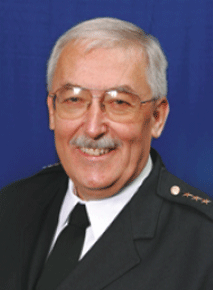
Each month, the Police Chief provides IACP members with insights into emerging law enforcement issues, such as the threat posed by weapons of mass effect or the latest advances in forensic technology, keeping us up-to-date on the cutting edge of policing and providing perspectives on the new leadership challenges we all face. Although each of these issues is significant, it is also absolutely imperative that we not forget the critical importance of our more traditional law enforcement responsibilities, such as promoting highway safety and reducing the number of people killed or injured on our roads and highways.
There is little doubt that some of the most costly problems we face are the loss of lives, the amount of personal injury and suffering, increased health-care costs, and financial losses due to damage to property caused by traffic crashes. In the United States alone, these incidents kill an average of five people every hour. Crashes result in nearly 1,400 emergency room visits every hour and cost the U.S. economy more than $150 billion a year.
Tragically, nearly every traffic crash is preventable. Studies have consistently shown that almost every crash is caused by a violation of one of the “rules of the road.”
It is for this reason that the IACP Highway Safety Committee continues its leadership role by developing and supporting strategies that save lives. It presented for ratification at the 115th Annual IACP Conference an ambitious resolution adopting a national highway safety goal of halving fatalities over the next two decades, or by reducing fatalities by 1,000 per year. The committee believes that this goal can be attained when active, sustained levels of traffic enforcement target the types of violations that cause crashes as well as the times and places where these violations predominate.
In addition, the Highway Safety Committee’s Law Enforcement Stops and Safety Subcommittee (LESSS) has sought to reduce the number of officers struck and killed by vehicles. Currently, an average of one police officer is struck and killed each month. To this end, LESSS has assisted the Federal Bureau of Investigation (FBI) in developing a new “Analysis of Officers Accidentally Killed” form that will be available later this year. The form will eventually provide much-needed data that will reveal the factors that cause officers’ deaths, allowing us to address them. LESSS also has produced and distributed to U.S. and Canadian law enforcement agencies three roll call videos: Your Vest Won’t Stop This Bullet, P.U.R.S.U.E., and Saving Lives . . . One Stop at a Time.
The IACP’s international Drug Evaluation and Classification (DEC) program continues to train officers to recognize impairment in drivers under the influence of drugs other than, or in addition to, alcohol. Once officers complete this intensive training, they are certified for two years as drug recognition experts (DREs). Since its inception in 1990, the DEC program has expanded from four pilot states to 45 states, the District of Columbia, and most of Canada and has certified more than 15,000 DREs, about 6,000 of whom are now actively removing from our highways impaired drivers who threaten the safety of others. The 15th Annual IACP Training Conference on Drugs, Alcohol, and Impaired Driving will be held in Little Rock, Arkansas, between August 8 and 10, 2009.
In addition to these efforts, the IACP is working closely with the Division of State and Provincial Police and other key stakeholders as Congress debates the reauthorization of the National Surface Transportation Policy (also known as SAFETEA-LU). This legislation will determine funding levels and priorities for the next five years for highway construction and safety programs. Significantly, it will also set parameters for the strategic highway safety plans of all 50 states. The IACP will work with policy makers to provide increased funding for highway safety programs and to place added emphasis on addressing the human factors that cause the majority of highway crashes. In addition, the IACP will continue its strong support for proactive safety measures, such as ignition interlocks and maintaining the national drinking age of 21 years.
All of these efforts are critical because we, as police leaders, know that consistent enforcement of traffic laws provides immediate payback in terms of reduced deaths, injuries, and property damage. We also know that traffic enforcement also brings other benefits to a community. Criminals, like law-abiding citizens, travel by vehicle; when they observe signs of visible traffic enforcement activity in a specific jurisdiction or area, they shy away from it and take their crimes elsewhere.
Clearly, highway safety and effective traffic enforcement are important to everyone. Although traffic law enforcement is not “sexy”—Hollywood will never make movies or television series about traffic enforcement—it is an area where we can truly have an impact on the safety of those we serve. I am proud that the IACP continues its unparalleled commitment to actively develop and support programs and activities that save lives and reduce injuries.
It is vital that we, as police leaders, take a leading role in promoting and implementing effective traffic enforcement efforts. We know that traffic enforcement saves lives and that it also helps to identify or prevent other criminal activity. We need to be leaders both in word and in deed, as we work to develop community-based strategies that will involve parents, educators, and activists who share the goal of promoting safer highways and, as a result, safer communities. ■


